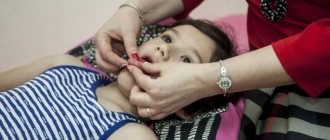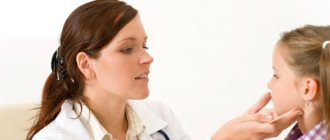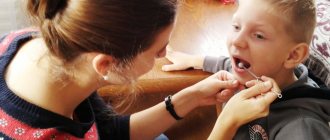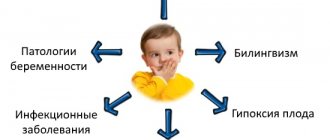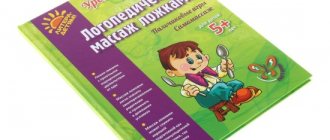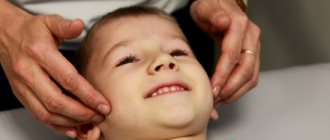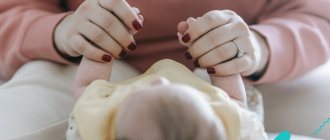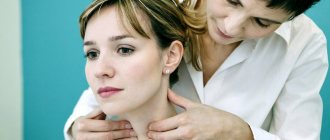Rhinolalia is a speech disorder manifested by severe distortion of speech and incorrect pronunciation of individual sounds. As a rule, the development of this speech pathology is caused by an abnormal structure of the speech apparatus. The speech of a child with rhinolalia has a specific sound: since this pathology involves a violation of the resonator function of the nose, air flows incorrectly, which provokes deformation of sounds.
In addition to sound distortions, rhinolalia can cause difficulties in the lexical and grammatical development of a child’s speech. To exclude the development of psychological problems, specialized work with a child with rhinolalia is necessary.
Forms of rhinolalia
The development of rhinolalia is caused by improper interaction between the nasopharynx and the oral cavity. The following forms of rhinolalia are distinguished:
- Open rhinolalia - this form of disorder is characterized by the passage of air currents simultaneously through the nose and mouth, which forms a nasal resonance when sounding. —
- Closed rhinolalia - with this form, it is difficult for air to escape through the nose due to the presence of some kind of obstruction. In this case, the pronunciation of consonant sounds is especially distorted, and there is also a distortion of tonality and sonority when pronouncing vowel sounds.
- Mixed rhinolalia - in this case, a combination of nasal obstruction with insufficiency of the velopharyngeal seal is characteristic. In this case, there is a distortion in the pronunciation of nasal sounds. The speech of a child with mixed rhinolalia has a nasal sound.
These types of speech pathology can be organic and functional. Organic rhinolalia is usually caused by:
- birth defects;
- injuries and tumors;
- deformation of the nasal cavity.
The cause of functional rhinolalia, as a rule, is hyperfunction of the soft palate with low muscle tone, as a result of which the air flow is directed through the mouth.
Causes of rhinolalia
Rhinolalia in children can be either congenital or acquired. The causes of congenital rhinolalia include:
- cleft palate;
- nasal deformity;
- deformation of the upper jaw;
- shortening of the soft palate.
Defects of this kind form in the early stages of pregnancy and are a consequence of diseases of the pregnant woman (rubella, influenza, etc.). In addition, the development of defects can be caused by: smoking, consumption of alcoholic beverages and drugs, as well as chemical poisoning.
The causes of acquired rhinolalia include:
- various injuries (face, nose, head);
- tumors;
- removal of adenoids;
- nasopharyngeal fibroids;
- nasal polyps;
- cerebral hemorrhage;
- neurological disorders.
In addition, experts note cases that the development of a nasal voice may be due to the fact that a small child, at the stage when he is learning to speak, copies the nasal voice of someone from his environment (parents, peers), as a result of which a speech disorder develops.
Rhinolalia Treatment Center
As a rule, diagnosing rhinolalia does not cause any particular difficulties. Difficulties may arise at the stage of determining a specific type of pathology. For a more accurate diagnosis, examination of children with rhinolalia should begin with a visit to specialists such as an otolaryngologist, dentist and speech therapist.
First of all, it is necessary to determine the causes of rhinolalia. To do this you need to perform a number of studies:
- X-ray of the nasopharynx;
- rhinoscopy;
- pharyngoscopy, etc.
The child’s pronunciation of all sounds, both vowels and consonants, as well as vocabulary and grammar, reading and written speech must be checked. Treatment of rhinolalia, as a rule, involves an integrated approach:
- surgical intervention (necessary for organic forms of rhinolalia);
- physiotherapy;
- psychotherapeutic assistance;
- classes with a speech therapist.
Corrective work for rhinolalia should begin as early as possible, this will achieve the desired effect in a shorter time.
Correction of rhinolalia at the First Children's Medical Center includes the following:
- speech therapy sessions aimed at correcting sound pronunciation;
- voice timbre correction;
- breathing exercises;
- speech therapy massage;
- work related to expanding the child’s vocabulary, as well as the formation of auditory attention;
- articulation gymnastics.
In cases where the correction of rhinolalia included surgical intervention, the Center’s specialists carry out speech therapy work aimed at teaching the little patient to pronounce sounds under new anatomical conditions. In this case, breathing exercises and palate massage are performed.
By contacting our Center, you will receive qualified help from a speech therapist who will pay special attention to your child and give answers to all your questions. We are happy to help you! First Children's Medical Center: Children's health - parents' peace of mind!
Share on social networks:
To make an appointment with a doctor
Choose a doctor
Corrective capabilities of speech therapy massage
A speech therapist often has to face difficulties in preparing and producing many sounds in children with severe speech impairments. This is especially true for students with rhinolalia and various forms of dysarthria. When correcting sound pronunciation, their speech often retained a nasal tone to their voice.
A huge help in the hard work of a speech therapist with children with congenital nonunions of the lips, hard and soft palate and the operated hypoglossal ligament will be: massage of the operated palate, training in lowering the root of the tongue and holding the tip of the tongue at the lower incisors.
The proposed massage techniques are available to everyone, they give excellent results in the shortest possible time with systematic lessons from a speech therapist and parents with children. You can observe the dynamics in improving sound pronunciation using control tape recordings of the child’s speech. The most important thing in our massage technique is consistency, great patience and systematicity.
A.G. Ippolitova o (1983).
General information about massage
Those who believe that the effect of massage is reduced only to a mechanical effect on certain areas of the body are mistaken. It stimulates the body as a whole, enhances metabolic processes in certain tissues and organs, which helps improve sleep, increase muscle strength and elasticity. Massage facilitates the movement of blood through the capillaries, accelerates venous outflow, and therefore helps speed up the healing of wounds and the maturation of scars. Massaging the soft palate can lengthen it somewhat.
Massage in the oral cavity is contraindicated for stomatitis, tonsillitis, acute respiratory diseases, and elevated body temperature. In this case, it should be replaced (!) by gargling with herbal infusions (sage, chamomile, calendula, etc.) 2-3 times a day. The child himself and the adults around him should be taught this.
The massage is performed only with clean, dry, warm hands with short-cut nails and fingertips. The load is increased gradually. The massage can last from 2 to 10 minutes. It must be carried out daily, and for the oral cavity - on an empty stomach.
Do not massage your child if he is in a bad mood. The child should perceive massage and all types of exercise therapy as an interesting game.
A child suffering from congenital nonunions of the upper lip, hard and soft palate is advised to massage the face before and after surgery, especially the orbicularis oris muscle, hard and soft palate, and uvula.
Massage techniques
In speech therapy work with children, four massage techniques are used in the following sequence: stroking; trituration; kneading; vibration.
Stroking improves skin respiration, enhances the excretory function of the skin glands, increases musculocutaneous tone, muscle contractile function, and promotes the opening of reserve capillaries, which makes the skin smooth and elastic.
Stroking the articulatory organs is carried out slowly and rhythmically. And the soft palate and hyoid ligament are massaged only in the direction of their lengthening. There is straight, spiral and combined stroking. It is with stroking that the massage begins and ends.
Rubbing is performed in places prone to stagnation (for example, the scar area). The skin, along with the underlying tissues, stretches or moves in different directions. When stretched, blood circulation increases and a local increase in body temperature occurs by 1-2 C. There is straight-line, spiral, circular rubbing and rubbing with pinches.
Kneading is the main method of action on muscle tissue. This is passive gymnastics for the muscles. Here, grasping, pulling, pushing back the muscle and alternating pressure on the tissue occurs. Knead with the pads of the thumb and index fingers.
Vibration is done with fingertips placed perpendicular to the area being massaged. Movements are performed with maximum frequency. Vibration stimulates reflexes, leads to the restoration of extinct reflexes, and has a pronounced analgesic effect.
Orbicularis oris muscle massage
It begins with stroking from the nodule of the left auricle with the second and third fingers. The index finger strokes the upper lip, and the middle finger strokes the lower, connecting at the right corner of the mouth. The same movement is repeated with the left hand from the right nodule of the auricle to the left corner of the mouth. The movement is performed 6-8 times with each hand. Then, with both thumbs, from the middle of the upper lip, stroke and rub to the corners of the mouth. The same is done from top to bottom along the upper lip from under the nose.
Then the index finger is inserted under the lip, and the thumb lies outside and kneading begins. The fingers move left and right, from top to bottom, as if crushing and stretching the lip down. Kneading is carried out in the area of the scar, as well as to the right and left of it. The scar is gradually stretched in length. When retracting the lip, you can grab it with a piece of sterile bandage to prevent your fingers from slipping. Vibration of the upper lip is carried out with the index fingers placed perpendicular to it. You need to move from the middle of the lip to the corners of the mouth with two fingers at the same time. The massage ends with stroking.
Massage of the hard and soft palate
Massage can begin two weeks after surgery. It should soften surgical scars and ensure good mobility of the soft palate. Massage should be performed several times daily, especially in the first 6-8 months. The massage therapist should put a finger guard on the index finger. The child licks it (so that it slides) and you can start. The child is sitting on a chair. The masseur stands to his right. The palm of his left hand should lie on the child’s crown (because he is trying to rise up and “run away” from the finger performing the necessary movements). At the same time, the adult continuously, affectionately and gently tells the child about the need for a massage, that everything will work out, that later he will learn to speak better, that he needs to be patient a little, to experience unpleasant sensations in the mouth, etc.
The massage begins from the upper front teeth along the arch of the palate back, along the soft palate to the pharynx. The palate is stroked several times, then rubbed along the straight line of the seam from front to back, in a spiral. The pressure of the finger on the palate and scar should be as strong as the child can tolerate. It gradually intensifies from the beginning to the end of the session and from session to session. After 5-6 months, the scar becomes softer and more elastic.
After straight and spiral movements, two or three “Christmas trees” are “drawn” on the palate. At the same time, the adult gently says to the child:
- Now we’ll draw a Christmas tree on your palate. This is its peak. (The place behind the front teeth.) This is the root of our Christmas tree. (Soft palate and hanging tongue.) Now let’s draw the trunk of a Christmas tree on the palate. (The finger moves from the front upper incisors to the hanging uvula of the soft palate, pressing on the scar tissue.) And now I will draw the paws of the Christmas tree. (The finger is quite strong, moving the tissue towards the pharynx, pressing from the imaginary “tree trunk” to the teeth.)
It is very effective to lift the soft palate as high as possible with your finger, following its natural movement when pronouncing the sounds [a], [e].
The movements of the soft palate must first be observed in front of a mirror and then shown to the child. It is necessary to compare the height of the soft palate, trying to raise it higher. If visual control is not possible, you can feel the palate with your fingers (your thumb, index or middle finger for a child). The child should also be given the opportunity to feel the movements of the adult’s palate.
The child pronounces the sound [a], the adult moves his finger upward behind the palate, asking to raise it even higher: “Let the palate run away from my finger.” This is done several times until the gag reflex occurs. They also work with the sound [e]. At the end of the lesson, you must thank the child and praise him.
As a rule, immediately after the massage, the nasal tone in the child’s speech decreases. But do not flatter yourself with the hope that he himself (as they write in some manuals) will give the necessary massage with the pad of his thumb, cause a gag reflex, or press with maximum force on a fresh, very painful postoperative scar. Such conscientious children simply do not exist. Although some “artists” have learned to perfectly imitate the massage process. But the result is not the same! Even skipping a massage for one or two days makes the scar denser (this can be felt immediately with a finger, but never with a probe). Naturally, it is necessary to explain to the child the need for self-massage, because an adult will not be able to perform it several times a day.
So, only the finger of a speech therapist or a parent interested in quick and high-quality correction of a child’s speech will be able to work wonders in a short time with a shortened, scarred palate, turning it into an elastic, obedient and very important organ of articulation.
If a child bites during a massage (an involuntary, rather strong clenching of the jaws is possible), you should bandage the upper phalanx of the index finger with several layers of a narrow bandage, put a fingertip on it and wipe it with alcohol. You can buy an hourglass at the pharmacy (1 min., 2 min., 5 min.), and for the child this unpleasant procedure will not be so tiring. You can finish the massage by playing with a pipette, dropping 3-5 drops of tasty liquid into the child’s mouth so that he swallows it. This gives excellent results when training the muscles of the soft palate and pharynx.
Vibration of the uvula of the soft palate
It is performed with the middle or index finger, which is inserted into the mouth and placed perpendicular to the uvula of the soft palate. Then vibration begins left and right with maximum frequency. As a rule, this causes a gag reflex, which is useful for training the muscles of the pharynx and palate. (The attenuation of the reactions of the pharyngeal muscles to a stimulus can begin at 5 and end at 7 years.)
All described manipulations must be performed calmly and confidently! It is very important to show restraint and patience, to carry out extensive explanatory and psychological work both with the child himself and with his immediate environment.
Children need to gradually get used to massage, which should not turn into torture, since it has to be done for a very long time (6-12 months, and sometimes more).
In addition to massage, it is necessary to regularly engage in exercise therapy and breathing exercises.
We are happy to help you and your children!
